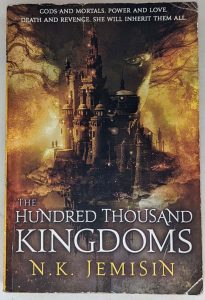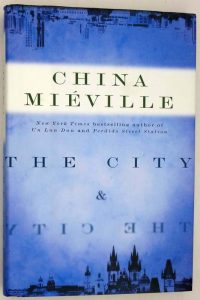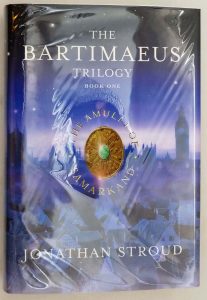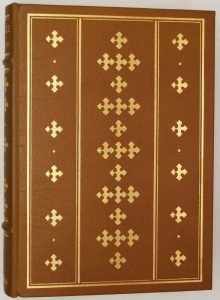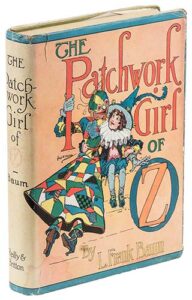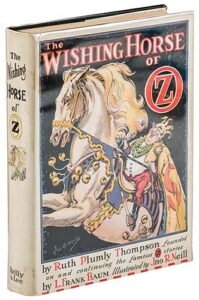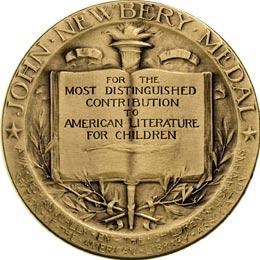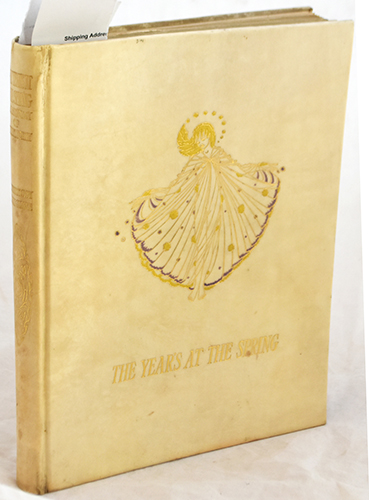
The Years at the Spring (1920), compiled by L. D’O. Walters and illustrated by Harry Clarke, emerges as a dazzling jewel of Art Deco book design and Irish artistic innovation. Published by Harrap in London, this anthology of lyrical poetry and prose becomes a visual symphony under Clarke’s masterful hand, where each page vibrates with the tension between celestial beauty and gothic unease. His illustrations transform the written word into intricate black-and-white fantasies—willowy maidens with star-crowned hair drift through metaphysical landscapes, their diaphanous robes etched with such precision that individual threads seem visible. Clarke’s use of negative space creates a luminous quality, as if moonlight itself radiates from the paper, particularly in his interpretation of Yeats’ “The Song of Wandering Aengus,” where the silver apples of the moon glow against inky cross-hatched forests. The artist’s decorative borders weave Celtic knotwork with Egyptian motifs, a testament to post-war eclecticism, while his full-page plates for poems like de la Mare’s “The Listeners” pulse with silent, haunted energy. Clarke’s figures—their elongated limbs and kohl-rimmed eyes recalling both stained-glass saints and cabaret performers—inhabit a liminal world where Symbolist melancholy meets Jazz Age modernity.
About Harry Clarke (1889-1931):
This Irish stained-glass artist and illustrator channeled the full force of Celtic mysticism and Continental decadence into his brief but meteoric book career. Trained at Dublin’s Metropolitan School of Art under the shadow of Yeats’ Celtic Revival, Clarke fused Beardsley’s sinuous line with the macabre intensity of German Expressionism. His 1916 illustrations for Poe’s Tales of Mystery and Imagination announced his genius, but this 1920 work reveals his mature style—where his Dublin studio’s stained-glass practice informed the luminous quality of his black-and-white illustrations. Unlike contemporaries who softened poetry with prettiness, Clarke mined verses for their latent darkness, as seen in his chillingly beautiful plate for Rossetti’s “The Blessed Damozel,” where the titular figure leans from heaven’s balcony with skeletal fingers. Though tuberculosis cut short his life at 41, Clarke’s influence endured through his work for The Fairy Tales of Hans Christian Andersen (1916) and Faust (1925). This 1920 volume, created during Ireland’s violent struggle for independence, reflects both his nationalist pride and cosmopolitan flair—a duality evident in illustrations that pair Celtic spirals with Viennese Secessionist geometry.
For devotees of this edition, these kindred works may intrigue:
• The Fairy Tales of Hans Christian Andersen (1916) also by Clarke – his breakthrough in color
• Salome (1907) illustrated by Beardsley – the decadent predecessor to Clarke’s style
• The Poems of Edgar Allan Poe (1923) illustrated by Clarke – his final masterpiece
